Table of Contents
The Bahraini flag, also known as the flag of Bahrain, holds a significant place in the nation’s history and culture, representing the Bahraini identity and heritage. With its distinctive colors and meaningful symbolism, the flag stands as a powerful symbol of unity and pride. In this article, we will delve into the intriguing aspects of the Bahrain flag, exploring its design, historical background, and the symbolism behind its elements.
The Bahrain flag consists of a white band on the hoist side and a red band on the fly side, separated by five white triangles forming a serrated line. The flag’s colors and unique design hold deep symbolic meaning for the Bahraini people and reflect the nation’s values, aspirations, and historical significance.
Bahrain Flag: Colors and Symbolism
- The flag of Bahrain features two vertical sections separated by a serrated line. The white section lies on the hoist side, while the red section covers the fly side. The serrated line consists of five white triangles.
- Red Section: The red color traditionally represents the historical wars and struggles endured by the Bahraini people.
- White Section: The white color symbolizes peace and prosperity, embodying the nation’s aspirations for stability and harmony.
- Serrated Line: The five white triangles symbolize the five pillars of Islam, reflecting the country’s strong Islamic heritage and the centrality of these values in Bahraini society.
Flag of Bahrain
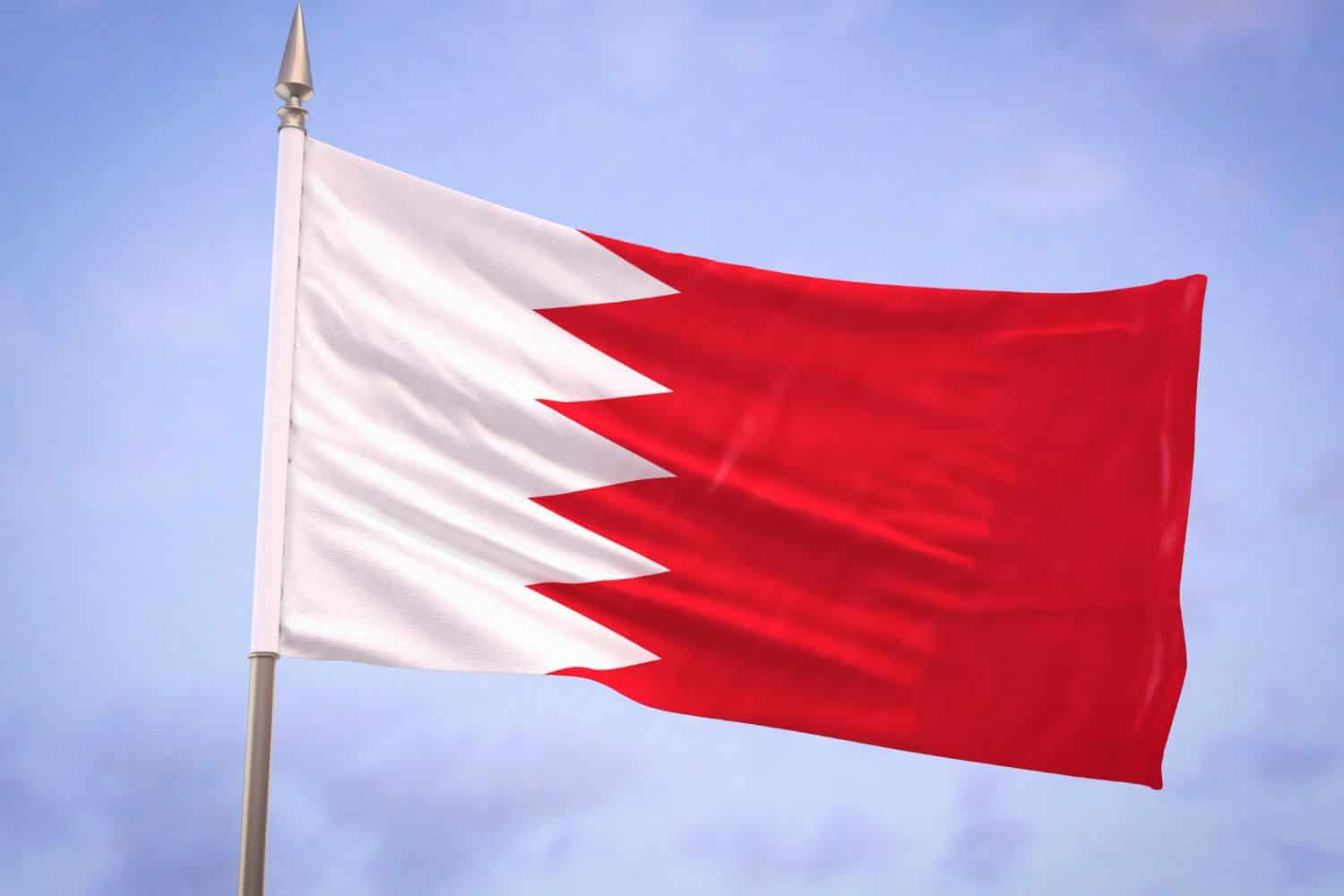
The Bahraini flag consists of two main sections separated by a serrated line. On the hoist side, a vertical white band signifies peace and purity, while the fly side features a wider red band.
- Red Band: The red section on the fly side symbolizes the battles and challenges faced by the Bahraini people. Historically, it represents the sacrifices made during times of war and the bravery demonstrated by the nation.
- White Band: The white section on the hoist side represents peace, purity, and hope for Bahrain’s future. It embodies the aspirations of the Bahraini people for harmony and prosperity.
- Serrated Line: The serrated line separating the two bands consists of five white triangles, each symbolizing one of the five pillars of Islam. This design emphasizes Bahrain’s strong Islamic heritage and reflects the nation’s religious and cultural values. The line also represents Bahrain’s readiness to defend its values while striving for peace.
National Flag Etiquette and Protocol
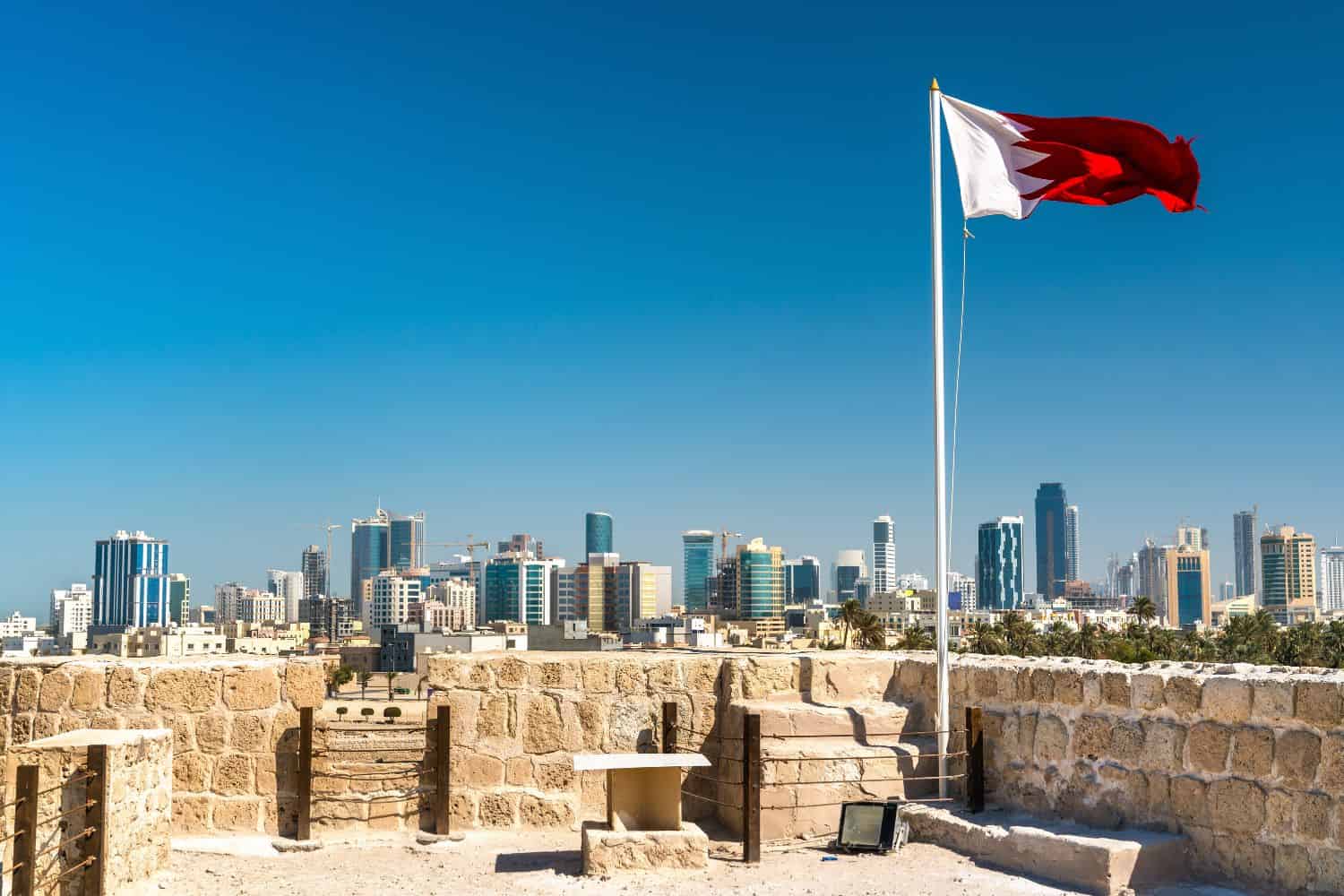
Respecting the proper usage and display of the Bahraini flag is crucial. Understanding flag etiquette is vital, particularly during national events and ceremonies. Learn about the protocols governing the handling, hoisting, and lowering of the flag, as well as the proper methods for retiring or handling damaged flags to ensure the utmost respect is maintained.
- Proper Handling: Always handle the Bahraini flag with care and respect. Ensure it never touches the ground or floor and is held upright without dragging.
- Hoisting and Lowering: The flag should be hoisted swiftly and lowered respectfully. Customarily, it is hoisted at sunrise and lowered at sunset, following specific guidelines and occasions.
- Displaying the Flag: When displayed vertically, the serrated edge should face upward, with the red band to the viewer’s left. Make sure the flag flies freely without any obstructions or entanglements.
- Half-Staff: Lowering the flag to half-staff is a mark of respect or mourning. This should occur on days of remembrance or as directed by authorities to honor national tragedies or the passing of notable figures.
- Flag Retirement: Damaged, torn, or worn-out flags should be retired with dignity. Follow the appropriate guidelines and local regulations for flag retirement, often involving a respectful burning ceremony.
- Flag Size and Placement: The flag size should correspond to the flagpole or display area proportionally. Refer to local guidelines or authorities for specific flag size and placement rules.
- Respectful Disposal: If burning isn’t possible for retiring the flag, consider burying it or handing it over to organizations authorized to dispose of flags respectfully.
Interesting Facts and Trivia
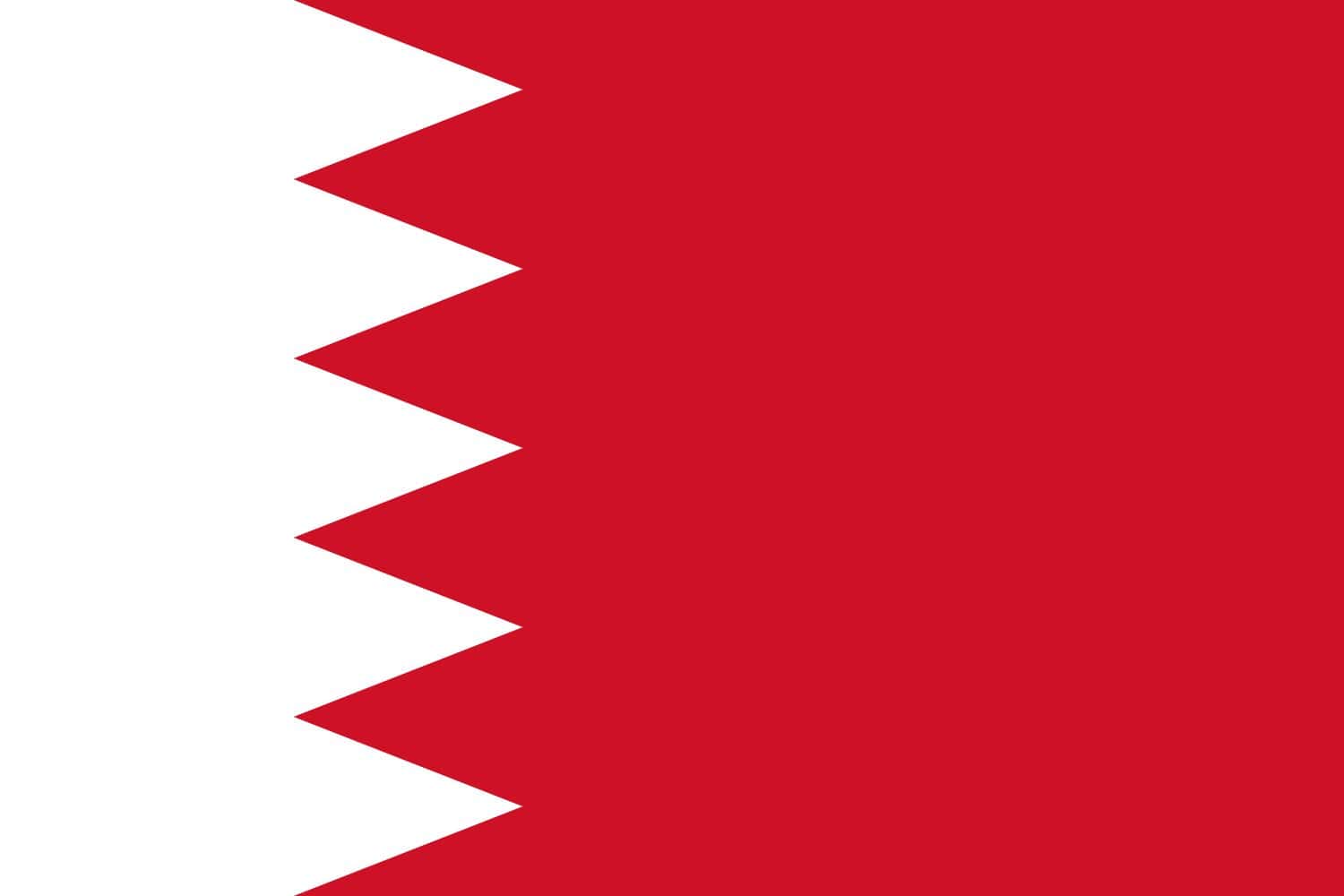
Explore fascinating facts and lesser-known trivia about the Bahraini flag, and discover the unique features and symbolism embedded in its design. Learn about significant incidents and events involving the flag that have shaped Bahrain’s national identity.
A Rich Tapestry of History
- 1932: The earliest form of the Bahraini flag was established, featuring the red and white design separated by a zigzag line. Initially, it had a larger number of points.
- 1972: The current version was adopted, simplifying the serrated line to five points, representing the five pillars of Islam.
- Events and Evolution: The Bahraini flag underwent modifications to align with regional agreements and evolving standards while maintaining its recognizable red and white colors.
- National Identity: The five points were standardized in 1972, emphasizing Bahrain’s strong connection to Islamic values and principles, as well as reinforcing its identity as a forward-looking, progressive nation.
These historical insights showcase the evolution of the Bahraini flag, highlighting its role in reflecting the nation’s values and cultural heritage, while marking significant periods in its history.
Flag-Related Symbols and Emblems
The Bahraini flag is just one aspect of national identity. Discover additional national symbols and emblems closely tied to Bahrain, their significance, and how they relate to the flag. Understanding their historical and cultural roots enriches your knowledge of the country’s heritage.
Symbolism of the Bahraini Flag
- Red Color: Represents the historical struggles and challenges faced by the Bahraini people, symbolizing their bravery, valor, and readiness to defend the nation.
- White Color: Signifies peace, purity, and a harmonious future for Bahrain, reflecting the nation’s desire for stability and prosperity.
- Serrated Line: Composed of five triangles, it symbolizes the five pillars of Islam, emphasizing Bahrain’s Islamic heritage and core values.
These symbols contribute to Bahrain’s identity and pride, reflecting the nation’s journey through history, its maritime legacy, cultural values, and shared vision for the future. Together, they unite Bahrainis under a common heritage while symbolizing the nation’s diverse aspirations.
Flags of Similar Countries or Regions
Examining the flags of Bahrain and its neighboring countries reveals fascinating similarities and distinctions. Explore the connections between these flags and uncover historical and cultural influences that shape their identities.
Bahraini Flag vs. Saudi Arabian Flag
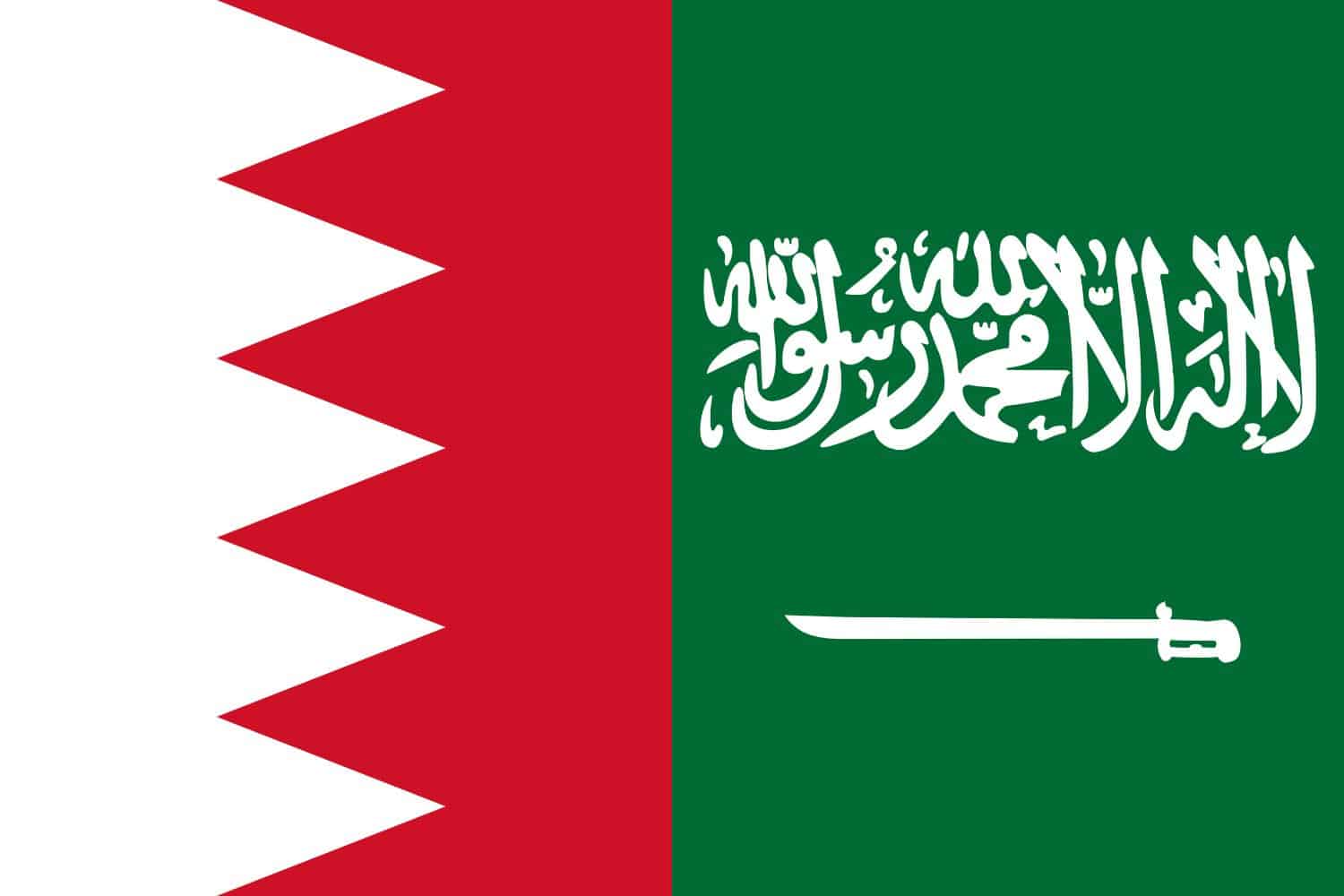
Similarity: Both flags feature a prominent green or white color symbolizing Islamic traditions and values.
Difference: The Saudi flag is fully green, with the Islamic creed (“Shahada”) in white Arabic script and a white sword underneath. The Bahraini flag has red and white vertical bands with a serrated line of five points.
Bahraini Flag vs. Qatari Flag
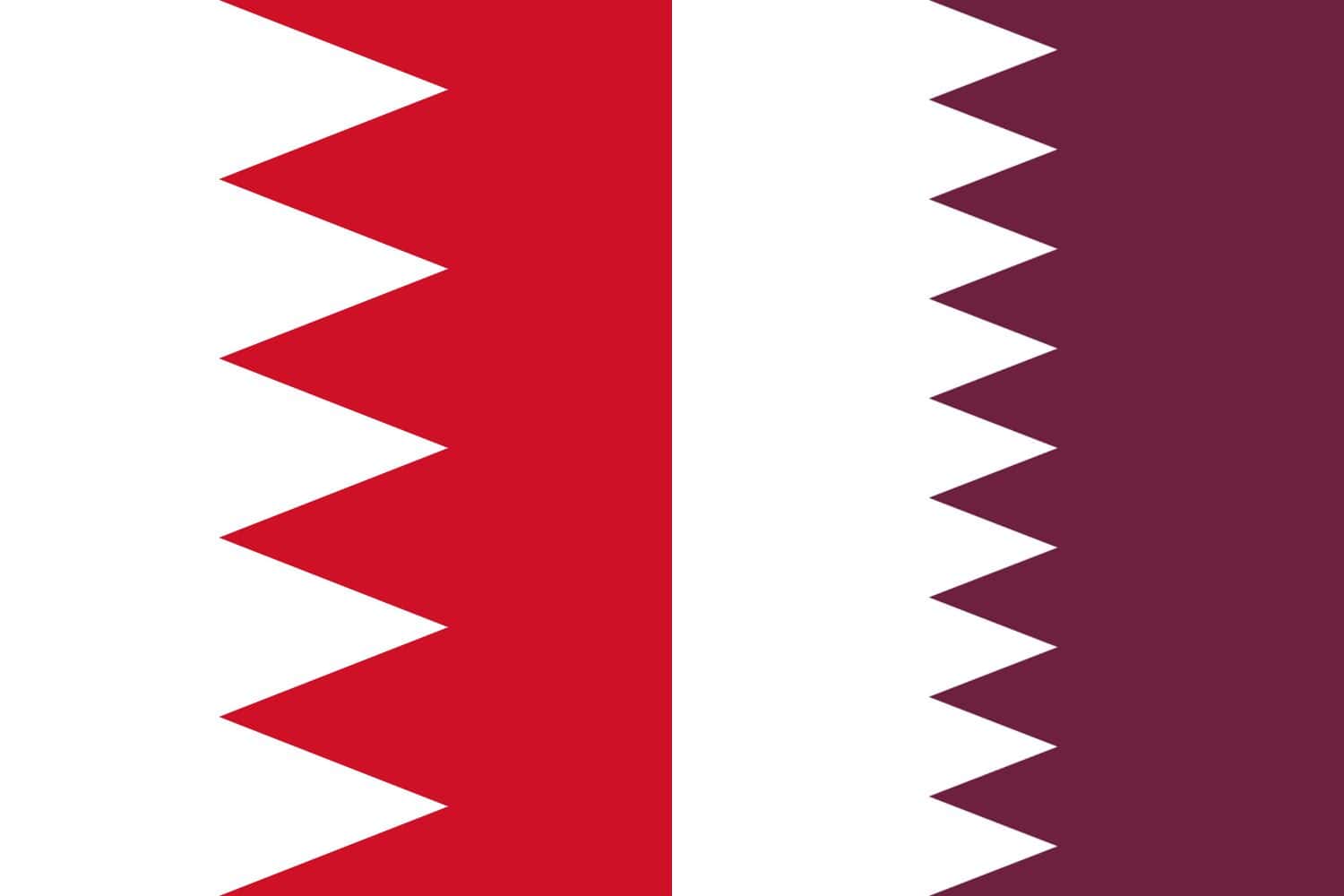
Similarity: Both flags feature a serrated line between contrasting colors, representing historical and cultural ties between the two nations.
Difference: Qatar’s flag has a maroon field and white serrated band, with nine points representing Qatar’s original municipalities. Bahrain’s flag has a red field and a five-point serrated line.
Bahraini Flag vs. Kuwaiti Flag
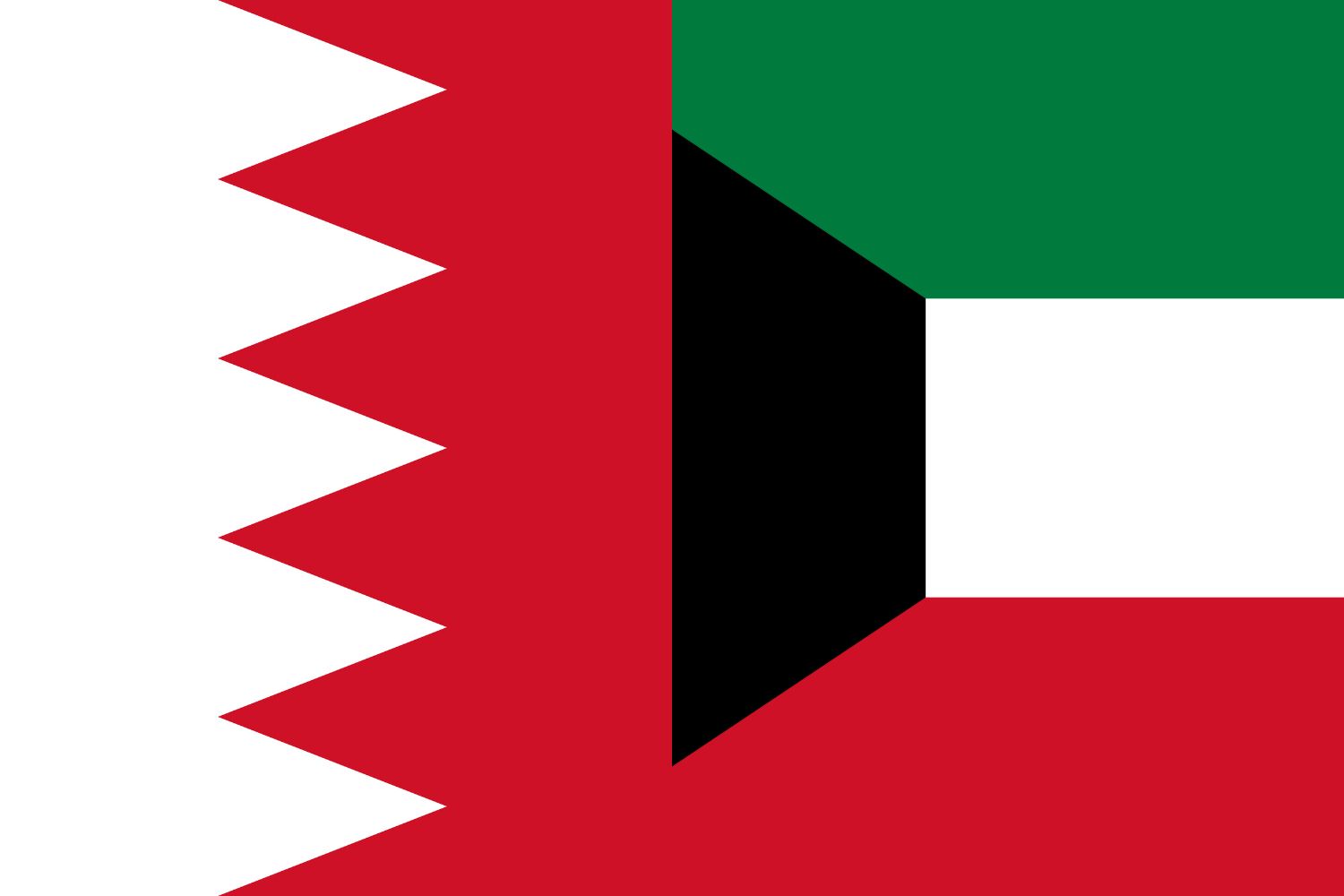
Similarity: Both flags use the pan-Arab colors of red, green, black, and white.
Difference: The Kuwaiti flag has horizontal stripes in green, white, and red, with a black trapezoid on the hoist side, while Bahrain’s flag features red and white vertical bands with a serrated edge.
Bahraini Flag vs. UAE Flag
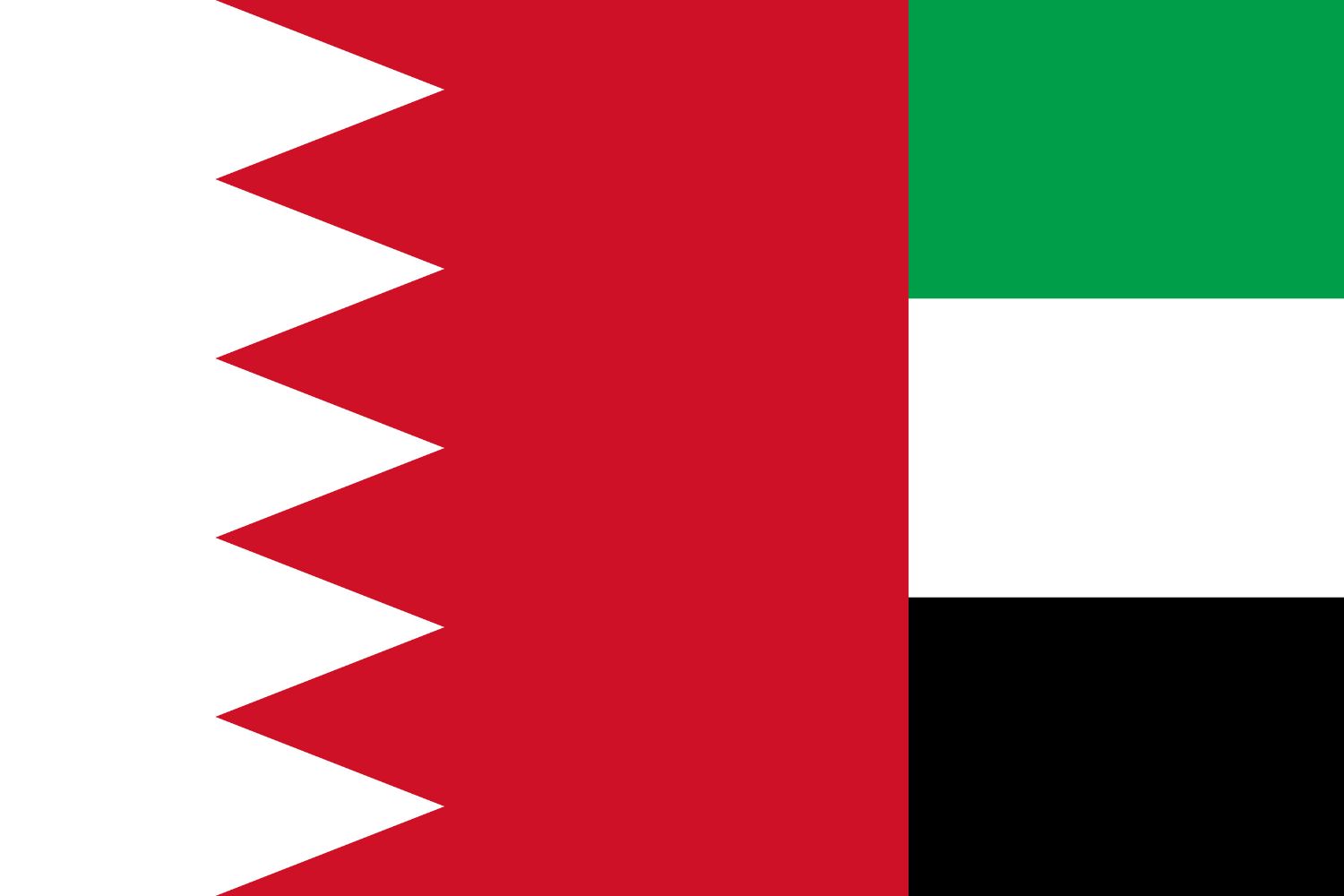
Similarity: Both flags incorporate pan-Arab colors that represent Arab unity and heritage.
Difference: The UAE flag has a red vertical stripe on the hoist side, with green, white, and black horizontal stripes extending to the fly side. Bahrain’s flag has a serrated white band and a solid red field.
Bahraini Flag vs. Omani Flag
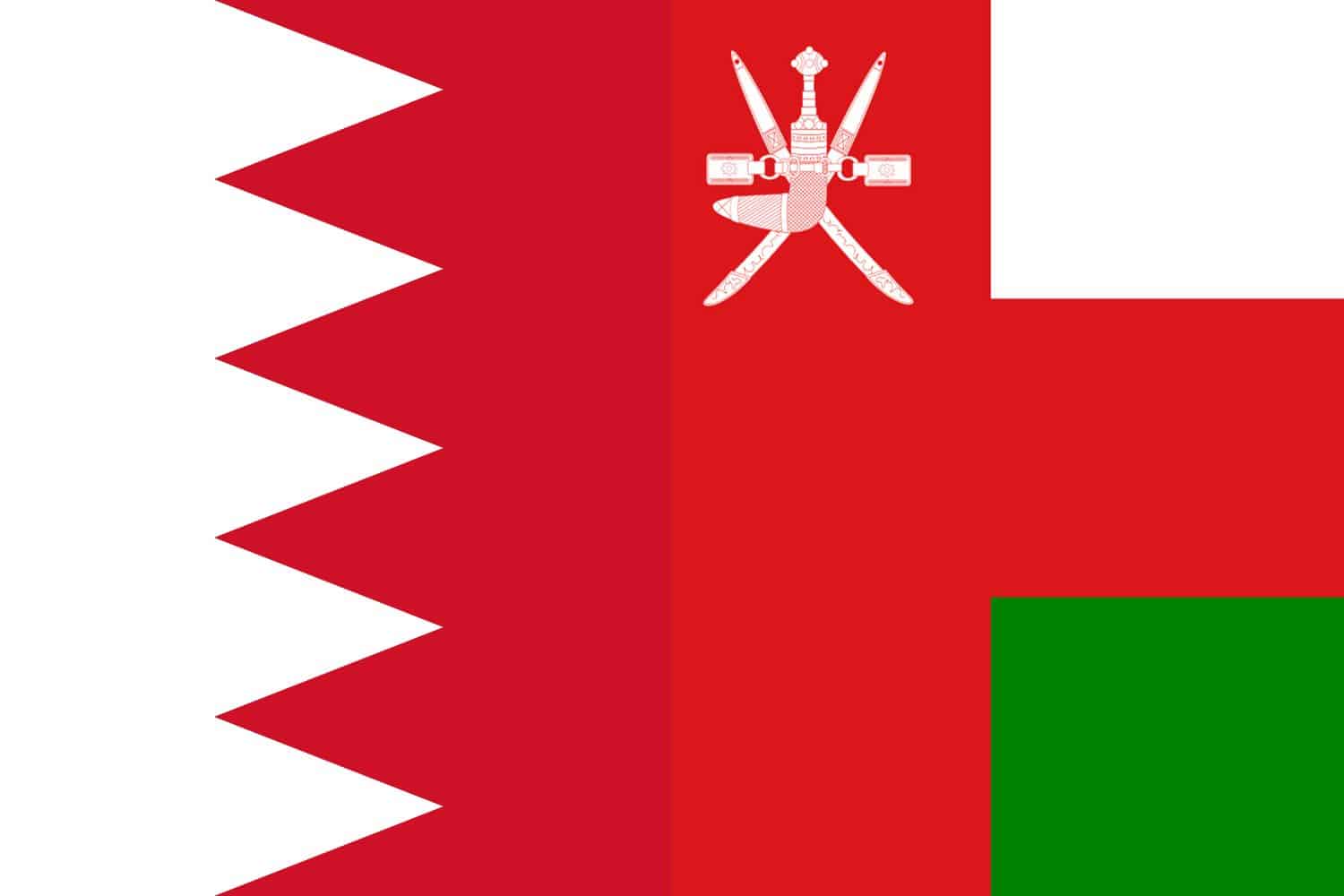
Similarity: Both flags include the color red, representing historical ties and struggles for independence.
Difference: The Omani flag has a vertical red stripe with a white emblem on the hoist side and horizontal stripes of white, red, and green, while Bahrain’s flag has a serrated white band and a red field.
Frequently Asked Questions (FAQs)
Explore responses to commonly asked questions regarding the Bahrain flag picture. From its historical roots to the significance of its components, uncover brief and enlightening explanations that cater to the curiosity of individuals interested in Bahrain’s flag.
What is the significance of the red color in the Bahraini flag?
The red color historically represents battles and challenges faced by Bahrainis, symbolizing bravery and readiness to defend the nation.
What do the five points in the serrated line represent?
The five points represent the five pillars of Islam, reflecting Bahrain’s strong Islamic values and cultural heritage.
When was the current version of the Bahraini flag adopted?
The current version of the flag, featuring five points, was adopted in 1972 to standardize the serrated line.
What is the meaning behind the white color in the flag?
The white color symbolizes peace, purity, and a harmonious future for Bahrain.
Why does the Bahraini flag have a serrated line?
The serrated line, featuring five white triangles, serves as a distinctive visual element and represents the five pillars of Islam. It also signifies Bahrain’s readiness to defend its values while striving for peace and unity.
What is the historical origin of the Bahraini flag?
The red and white design of the Bahraini flag traces back to 1932, initially featuring a higher number of points along the serrated line. The current version with five points was standardized in 1972 to align with regional agreements.
What protocols should be followed for hoisting the Bahraini flag?
The flag should be hoisted briskly at sunrise and lowered respectfully at sunset. It should always be treated with care and respect, never touching the ground or floor.
How should the Bahraini flag be disposed of if it becomes damaged or worn out?
If the flag is damaged or worn out, it should be retired with dignity. This often involves a respectful burning ceremony or handing it over to an organization that specializes in proper disposal.
